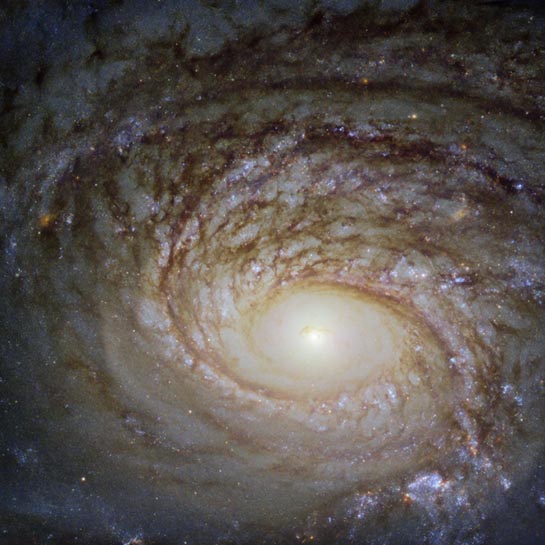
Spiral Galaxy
RA 1h 59m 18.85s Dec 19° 0' 24.19"
Aries
110 million light years
10.3
7.2 x 4.3 arcmin
1.26 x 1.25 arcminutes
North is 139.7° left of vertical
ESA/Hubble & NASA, A. Seth et al.
November 11, 2019
FullView: NGC 772
ABOUT
THIS IMAGE:
The Universe is simply so vast that it can be difficult to maintain a sense of scale. Many galaxies we see through telescopes such as the NASA/ESA Hubble Space Telescope, the source of this beautiful Picture of the Week, look relatively similar: spiraling arms, a glowing center, and a mixture of bright specks of star formation and dark ripples of cosmic dust weaving throughout.
This galaxy, a spiral galaxy named NGC 772, is no exception. Discovered on Nov 29, 1785 by William Herschel, it actually has much in common with our home galaxy, the Milky Way. Each boasts a few satellite galaxies, small galaxies that closely orbit and are gravitationally bound to their parent galaxies. One of NGC 772's spiral arms has been distorted and disrupted by one of these satellites (NGC 770 - not visible in the image here), leaving it elongated and asymmetrical.
However, the two are also different in a few key ways. For one, NGC 772 is both a peculiar and an unbarred spiral galaxy; respectively, this means that it is somewhat odd in size, shape, or composition, and that it lacks a central feature known as a bar, which we see in many galaxies throughout the cosmos - including the Milky Way. These bars are built of gas and stars, and are thought to funnel and transport material through the galactic core, possibly fueling and igniting various processes such as star formation.
From Wikipedia:
NGC 772 (also known as Arp 78) is an unbarred spiral galaxy approximately 130 million light-years away in the constellation Aries.
Around
200,000 light years in diameter, NGC 772 is twice the size of the Milky
Way Galaxy, and is surrounded by several satellite galaxies - including
the dwarf elliptical, NGC 770 - whose tidal forces on the larger galaxy
have likely caused the emergence of a single elongated outer spiral arm
that is much more developed than the others arms. Halton Arp includes
NGC 772 in his Atlas of Peculiar Galaxies as Arp 78, where it is described
as a "Spiral galaxy with a small high-surface brightness companion".
Two supernovae (SN 2003 hl & SN 2003 iq) have been observed in NGC
772.